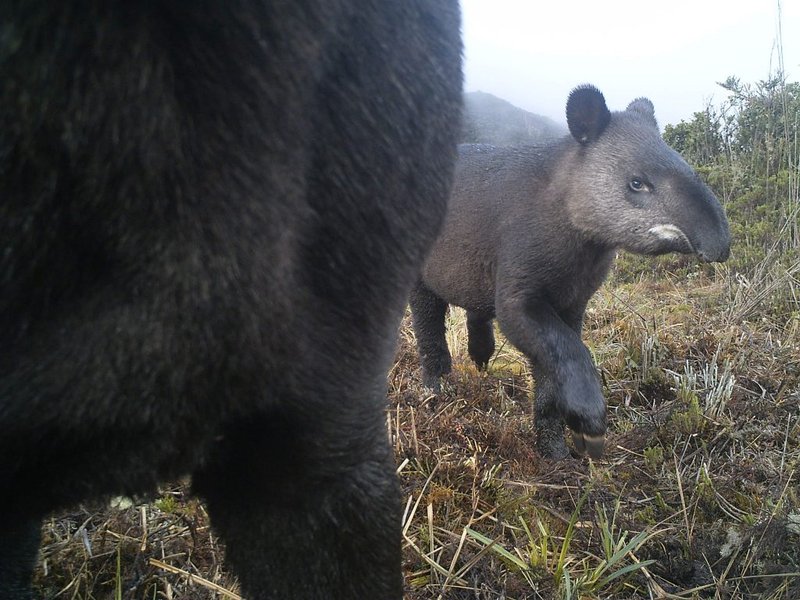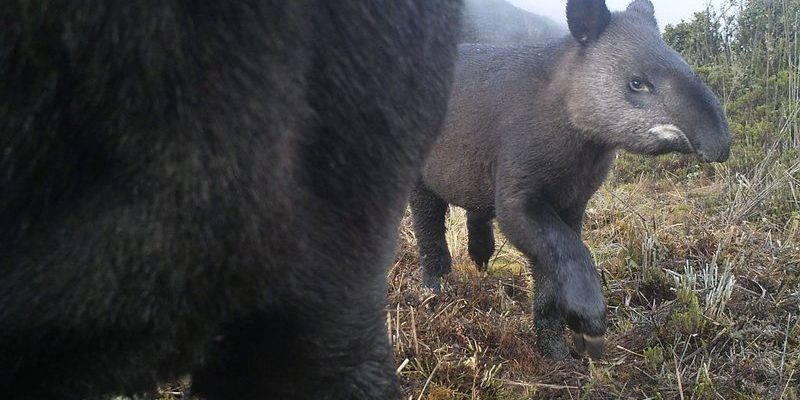
In this article, we’ll dive deep into the world of the mountain tapir. We’ll explore what it eats, how it finds its food, and the clever ways it survives in a challenging habitat. So, grab a cozy seat and let’s dig into the life of this remarkable creature!
The Mountain Tapir: An Overview
Mountain tapirs are the smallest and most elusive of all tapir species. These enchanting creatures are primarily found in the Andean mountains of Colombia, Ecuador, and northern Peru. Unlike their relatives, the lowland tapirs, mountain tapirs thrive in cool, moist environments, often at elevations between 3,000 and 4,500 meters (around 10,000 to 15,000 feet).
In stature, they resemble a small, stocky horse. With their thick, grayish-black fur, they blend in well with the rocky terrain. Mountain tapirs have a unique feature: a short, prehensile snout, which they use much like an elephant uses its trunk. This adaptation is key to their feeding habits, allowing them to reach up for leaves and fruit in higher shrubs.
You might be wondering, why do they stay in such high, hard-to-reach places? Simple! Less competition from other animals means more food options for these adorable herbivores.
What Do Mountain Tapirs Eat?
Mountain tapirs are herbivores, and their diet primarily consists of leaves, fruits, and grasses. They also munch on tree bark, which isn’t just for fun—it helps them get crucial nutrients. The variety in their diet is essential, especially since they live in a habitat where food sources can be scarce depending on the season.
These animals are particularly fond of a few specific plants. For instance, they enjoy ferns, shrubs, and the fruit of various trees, which are plentiful in their mountainous habitat. The tapirs’ strong jaws are perfect for chewing tough vegetation, allowing them to digest what many animals can’t.
Interestingly, mountain tapirs are also known to eat a certain type of moss. This behavior might seem odd, but moss can be a great source of moisture and nutrients, especially in the high-altitude forests where water is sometimes hard to find.
Hunting Strategies? More Like Foraging Techniques!
Now, you might be thinking, what kind of hunting strategies does a mountain tapir employ? Well, it’s not quite like a predator hunting down its prey. Instead, these gentle giants have developed effective foraging techniques to find their food.
For one, mountain tapirs are mostly nocturnal. This means that they do most of their foraging at night when temperatures drop and the forest is quieter. This advantage helps them avoid potential predators like pumas and Andean condors. Plus, the cooler night air can make foraging for food a bit easier.
During their nighttime adventures, mountain tapirs rely heavily on their keen sense of smell. Their strong olfactory senses help them locate food that may be hidden under dense vegetation or in hard-to-reach corners of their habitat. Just think of it like a game of hide-and-seek, but the mountain tapir is the champion at finding snacks!
The Importance of Food Availability
You might be wondering why the availability of food is such a big deal for mountain tapirs. Well, it’s straightforward: without adequate food sources, these animals can’t thrive. The impact of climate change and habitat loss due to deforestation poses a serious threat to their survival.
In areas where their natural habitat is disrupted, mountain tapirs often struggle to find enough food. As they depend on a variety of plants, any disruption can lead to decreased food options. For instance, if certain tree species are cut down, those fruits and leaves will vanish, leaving the tapirs with fewer choices.
Conservation efforts focus on protecting these areas and ensuring food sources remain abundant. Every tree and plant matters in keeping the mountain tapir population stable and healthy.
Adaptations to Vegetation
Mountain tapirs have some unique adaptations that help them take full advantage of their environment. Their pre-synaptic snouts are probably the coolest feature—imagine having a flexible nose that acts as a third hand! This adaptation allows them to reach high branches and pull down leaves, which might be out of reach for other herbivores.
Their stocky bodies are also well-suited to navigating steep terrain. Those short legs, though they may look awkward, help them maintain balance and stability on rocky slopes. This is essential for finding food and avoiding falls. Plus, their thick fur offers insulation against the cold, so they can forage freely even in cooler temperatures.
Just picture it: a mountain tapir effortlessly climbing its way up a steep slope, using its snout to snatch leaves from branches while maintaining its footing on rocky ground. It’s pretty amazing when you think about it!
The Role of Mountain Tapirs in Their Ecosystem
While mountain tapirs are primarily known for their unique diet and foraging habits, they play an essential role in their ecosystem too. As they wander through their mountainous habitat, they act as important seed dispersers.
When they eat fruits, some seeds pass through their digestive system whole. These seeds are then dropped in new locations through their droppings. This process allows new plants to grow in various areas, aiding forest regeneration. Think of them as nature’s little gardeners, helping to encourage fresh growth!
Additionally, their grazing habits help prevent overgrowth of certain plants, maintaining a balanced ecosystem. If they didn’t munch on those leaves and shrubs, certain species could overrun the space, leading to a less diverse habitat.
Conservation Challenges
Sadly, mountain tapirs are considered endangered. Their populations are declining, and there are a few reasons for this. Habitat loss due to human encroachment is a major factor, as forests are cleared for agriculture and urban development.
Moreover, poaching poses a significant threat. Mountain tapirs have few natural predators but are vulnerable to hunting due to their slow reproductive rate. Each female tapir may only give birth to one calf every two to three years, making it difficult for populations to bounce back if they’re being hunted.
Conservation programs are working towards securing their habitats and raising awareness about these charming creatures. By doing so, we can help preserve the mountain tapir for future generations to admire.
Wrapping Up the Mountain Tapir’s Journey
As we’ve explored, the mountain tapir is a fascinating creature with a unique diet and foraging strategies. Their adaptations help them thrive in challenging environments, and they play an important role in their ecosystem as seed dispersers. Unfortunately, these gentle giants face significant threats from habitat loss and poaching.
Understanding and protecting their habitat not only benefits the mountain tapir but also helps maintain the delicate balance of the Andean ecosystem. It’s a reminder of how interconnected everything is in nature; when one species is affected, it can have a ripple effect on many others.
So, the next time you think about mountain tapirs, remember their incredible journey through the Andes, their special diet, and the vital role they play in their home. These gentle giants deserve our attention and protection!

